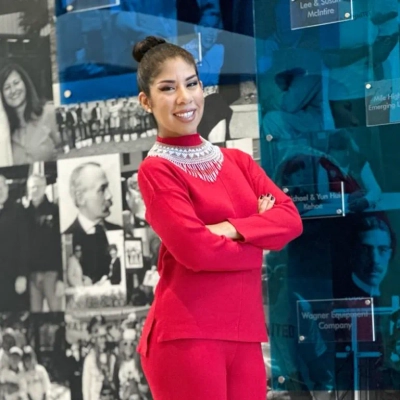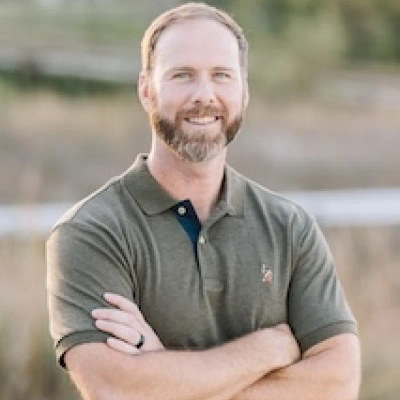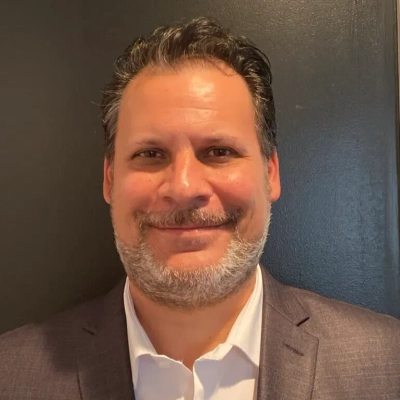18 Ways to Reimagine Your Career Goals During Industry Disruption
Industry disruption forces professionals to rethink how they approach career growth and adapt to rapid change. This article compiles insights from experts who have successfully reimagined their career trajectories during periods of transformation. The following 18 strategies provide practical guidance for repositioning your skills and building resilience in an evolving marketplace.
Treat Your Skills as Modular Assets
I had to completely reimagine my career goals during a period when the industry I'd built my path around shifted faster than anyone expected. The old playbook of slow, linear growth stopped working almost overnight. Strategies that used to give you a competitive edge became irrelevant, and the demand for speed, adaptability, and cross-functional thinking skyrocketed. It forced me to step back and admit that the version of my career I had been aiming for no longer existed.
The single adaptation that changed everything was learning to treat my skills as modular instead of fixed. Instead of tying my identity to a specific role or title, I started looking at the underlying capabilities that made my work valuable — strategic thinking, pattern recognition, growth execution, and the ability to translate complex problems into simple decisions. Once I understood those as transferable assets, I could rebuild my goals around where the industry was heading, not where it had been.
This shift opened doors that didn't exist before. It pushed me into advising founders, leading growth initiatives, and developing a more flexible career path that wasn't tied to one definition of success. It also made me far more resilient. When disruption hits, you're not starting from zero. You're simply rearranging the skills you already have into a new shape that fits the moment.
What I learned is that disruption isn't just an external event — it's an invitation to reinvent the story you've been telling yourself about who you are professionally. The people who navigate it best aren't the ones who cling to their old goals. They're the ones who stay curious, stay adaptable, and stay willing to rewrite the next chapter before someone else writes it for them.
Embrace Portfolio Thinking Over Rigid Identity
I hit a major turning point a few years ago when the industry I'd been building my career in suddenly shifted almost overnight. The skills that used to set me apart didn't carry the same weight anymore, and the path I'd mapped out for myself just stopped making sense. I remember sitting with that uncomfortable realization that I could either cling to the version of my career I had planned or reimagine a version that actually fit the new landscape. It wasn't a glamorous moment—more like a quiet, honest conversation with myself about what was still true and what no longer was.
The single adaptation that proved most valuable was embracing portfolio thinking instead of relying on one rigid career identity. Instead of asking, "What is my next job?" I started asking, "What mix of skills, projects, and relationships will keep me adaptable no matter what changes next?" That mindset opened the door to experimenting—consulting on the side, learning new tools, taking on cross-discipline projects, and building a broader network.
What surprised me was how empowering it felt. I stopped treating disruption as a threat and started seeing it as an invitation to evolve. And once I stopped clinging to a single path, opportunities showed up that I wouldn't have been able to see before.

Leverage Operational Expertise Beyond Technical Skills
After seven years building my telecommunications company to 30 employees and over $2 million in revenue, the writing was on the wall. Australia's National Broadband Network project was winding down, and the only path forward was maintenance work at a fraction of the revenue with triple the headaches. I had engineers, project managers, and even CEOs telling me the same thing: the golden era was over. I was 28, had achieved my goal of financial independence by 30, and suddenly faced a choice. I could pivot to mobile tower work, but I refused to ask my team to accept radiation exposure risks I wouldn't take myself. The industry had fundamentally shifted, and clinging to what worked yesterday was a guaranteed path to mediocrity.
The single most valuable adaptation was leveraging my operational expertise rather than my technical skills. Instead of looking for the next telecommunications opportunity, I asked myself what transferable value I'd actually built. Turned out, the systems I created for managing 30 employees, the custom software for tracking complex projects, the cash flow management that kept us profitable through feast and famine, the performance-based pay structures that motivated my team to earn six figures - these were universally applicable. I started informally advising friends from the military struggling in civilian business, and within months realized coaching was the play. The lesson: when your industry gets disrupted, your domain expertise becomes obsolete, but your systems thinking and problem-solving methodology remain valuable across every sector. I went from zero coaching clients to working with 300+ businesses across a dozen industries because I stopped identifying as a telecom guy and started positioning as someone who builds scalable operations.
Design Systems That Discover Answers Themselves
I remember when deep learning started moving from academia into the industry around 2012. For years, my teams and I had based our expertise on statistical learning and the careful work of feature engineering. We treated it like a craft, meticulously shaping data for our models.
Then this new approach came along that could learn features by itself. Suddenly, all our hard-won intuition seemed less critical. It wasn't just a new tool. It was a fundamental shift that made us question our own value, and my entire career path, built on mastering statistical details, felt like it was on shaky ground.
The biggest adjustment I made wasn't about learning a new technology. It was about changing how I saw my own role. I had to stop being the expert with all the answers and start being the one who designed systems that could find the answers.
My focus moved from knowing every algorithm to understanding the entire environment they operate in. That meant mastering data pipelines, experimental frameworks, computing infrastructure, and especially the human side of validating a model's results. My job wasn't just to build the engine anymore. It was to design the whole car and the roads it drives on.
I remember a junior data scientist I was mentoring who was completely panicked by the change. He was fantastic at feature engineering and was worried his skills were becoming useless, so he was trying to read every single academic paper on new neural networks.
One afternoon, I told him to stop chasing the latest technique. Instead, I had him map the full journey of one data point in our company, from the moment it was created to how it influenced a model's final prediction. Watching his focus shift from a frantic search for answers to a calm curiosity about the whole system was powerful. I realized my job wasn't to know everything anymore. It was to create the conditions for discovery.
Immerse Yourself in Continuous Learning Quickly
When AI started automating key tasks in my field, I realized traditional service models were becoming obsolete. I had to pivot from offering execution-based work to consulting and strategy-focused services. The most valuable adaptation was embracing continuous learning—immersing myself in AI tools, analytics, and process design. That allowed me to anticipate client needs, stay relevant, and offer value that automation couldn't replace. Without upskilling quickly, the disruption would have left me behind, but with it, I turned a potential threat into a new career trajectory.

Master Structural Data Analysis Over Manual Labor
I had to completely reimagine my career goals when satellite and drone technology became affordable, instantly disrupting the traditional, highly profitable manual roof inspection business. My goal had been to expand a traditional foreman-based inspection service, but this technology created a massive structural failure in that business model, eliminating the need for basic climbing and manual measurement.
The conflict was the trade-off: clinging to the old hands-on method (the traditional skill) versus securing the new digital competence (the future structural necessity). I immediately abandoned the goal of building a large team of manual inspectors. The single most valuable adaptation was the Non-Negotiable Pivot to Structural Data Analysis. I dedicated all my professional development time and capital to mastering thermal imaging interpretation and drone photogrammetry software.
This pivot allowed me to stop selling abstract labor and start selling verifiable, data-driven structural certainty. My new career goal shifted from managing physical crews to becoming the specialized expert who could diagnose complex, hidden structural failures that a standard inspector couldn't see. The best way to reimagine career goals is to be a person who is committed to a simple, hands-on solution that prioritizes mastering the emerging structural technology over clinging to obsolete manual skills.
Accept AI as Teammate Not Threat
I was once forced to entirely re-conceptualize my career objectives when AI and automation tools started to gain popularity in my profession. To start with, I was preoccupied with conventional content development and strategy, and a high amount of manual work and human process. However, as AI started automating the tasks that concerned SEO, the content creation and even the customer interaction, it became obvious that I could no longer do the same job.
The best thing that I could have adapted was to accept AI as a team tool but not to think that it is a threat. I did not fight automation, but I learned how to incorporate it into my workflow, such as using AI to draft content, analyze data, and conduct research. This enabled me to concentrate more on creative approach and making of superior decisions and leave the time-consuming tasks to the AI.
It was not only the change related to the usage of new tools but a reconsideration of my role: I became not a classic content strategist, but a manager of AI-based processes, streamlines workflows and becomes the driver of the technological innovation. Being adaptive to AI has not only made me competitive in the digital world that is constantly changing but also enabled me to open new prospects of growth and collaboration and bring greater value to my clients.

Pivot from Flipping to Rental Properties
When the 2008 recession hit right after I'd started buying homes in Augusta, I watched my flipping business grind to a halt as buyers vanished and credit dried up. Instead of panicking, I completely reimagined my path--I used those historic low-interest rates to pivot from flipping to building a rental portfolio, acquiring properties at rock-bottom prices that most investors were too scared to touch. That decision to embrace rentals rather than fight the market turned out to be the foundation of my financial freedom, generating the passive income that eventually let me leave traditional employment behind nine years later.

Combine Construction Experience with Brokerage Services
During my transition from construction to real estate, I faced a critical moment when the traditional brokerage model just wasn't addressing what homeowners truly needed. I had to reimagine my entire approach by creating a hybrid service that combines investment strategies with brokerage expertise. The most valuable adaptation was leveraging my 25 years of construction experience to provide honest assessments of property conditions and renovation costs--giving sellers genuine options rather than just standard listing services. This hands-on, solution-focused approach has allowed me to serve people where they actually are, not where the traditional real estate playbook says they should be.

Shift Toward Speed and Transparency First
When grant funding slowed during the pandemic, I had to rethink everything. The old model—long proposals, in-person meetings, endless waiting—just stopped working. I pivoted to digital-first outreach, using data tools to match agencies with funding opportunities faster and pitching virtually instead of chasing travel schedules. The biggest shift was mindset. I stopped treating grant writing as paperwork and started treating it as marketing with a purpose. That small change opened doors to new partnerships and recurring contracts that didn't depend on geography. The adaptation that mattered most wasn't tech—it was realizing the industry wasn't shrinking, it was shifting toward speed and transparency. Once I caught up, the disruption turned into opportunity.

Focus on Information Architecture Over Inventory
The moment I had to completely reimagine my career goals due to industry disruption was when I realized e-commerce was no longer about owning the biggest warehouse; it was about owning the clearest data. My initial goal, based on my finance background, was to become the best inventory risk manager. But when fulfillment platforms and third-party logistics (3PLs) became totally commoditized, that skill lost most of its leverage.
That disruption forced me to shift my focus entirely. My career goal changed from mastering financial risk to mastering information architecture. The most valuable single adaptation was forcing myself to master basic database design and advanced data visualization. I realized the only way to beat the competition was to know exactly what was happening inside my operation—and my customer's mind—faster and clearer than anyone else.
This adaptation proved most valuable because it allowed me to move from being reactive to being predictive. I stopped trying to execute every logistical step myself and started designing systems that feed me the cleanest, most actionable data. This is why I started Co-Wear: to prove that the highest value in modern retail isn't held by the person with the most inventory, but the person with the most operational clarity.

Invest in Better Project Management Tools
When the housing market slowed and material costs spiked, the old way of bidding and scheduling stopped making sense. Jobs that once felt predictable suddenly carried double the risk. That was the moment I had to rethink what growth meant. Instead of chasing volume, we focused on efficiency—fewer projects, tighter systems, stronger margins. The single adaptation that changed everything was investing in better project management tools. Real-time tracking showed exactly where time and money were slipping. It turned chaos into clarity. That shift from expansion to precision didn't just steady the business—it rebuilt confidence in uncertain times.

Build Workflows That Automate Content Generation
There was a pivotal moment in my career when the marketing industry shifted dramatically due to AI automation and changing consumer behavior. Traditional methods like email blasts and generic social media campaigns weren't as effective anymore. Instead, AI-driven tools started dominating content creation, predictive analytics, and even customer engagement.
I had to reimagine my career goals entirely. Rather than clinging to older strategies, I pivoted toward specializing in AI-powered marketing solutions and becoming an expert in how to leverage AI to create more personalized, high-impact experiences for clients.
The single adaptation that proved most valuable was embracing the role of content strategist combined with AI integration. Instead of just focusing on creating content, I began building workflows that automated content generation, personalized messaging, and predictive content strategies—all powered by AI. It allowed me to stay ahead of the curve while offering businesses scalable and data-driven marketing solutions. This adaptability opened doors to more advanced projects and long-term partnerships.

Commit to Radical Transparency with Homeowners
When the post-2008 market shifted from foreclosures to a hyper-competitive seller's market, I had to completely reimagine our acquisition strategy. My engineering background became my greatest asset - I developed a systematic approach to identifying off-market properties where we could create genuine win-win solutions for sellers facing specific challenges like inheritance or relocations. The most valuable adaptation wasn't technical though; it was embracing radical transparency with homeowners and being willing to say 'we're not your best option' when that's the truth. This commitment to honest problem-solving, rather than just transaction volume, fundamentally changed how I measure success in this business.

Meet Every Seller Face to Face
Back in 2008, the crash hit coastal NC especially hard, and just as I was settling into a groove, I realized the standard playbooks wouldn't cut it anymore. I made a point to start meeting every seller face-to-face, listening to why they were selling and what worried them most--sometimes sitting at kitchen tables for hours. That shift to personal connection, really learning each person's story, became my best adaptation--the deals got done not because I was the highest offer, but because people felt heard and trusted me with their next step.

Create Cash Based As Is Buying System
In 2008, when the financial crisis hammered Baltimore, I watched traditional real estate transactions essentially stop--my entire business model, which relied on conventional buyers and financing, evaporated practically overnight. The adaptation that saved me was shifting our entire focus to distressed properties and creating a cash-based, as-is buying system that eliminated all the friction points sellers were facing--no repairs, no waiting on banks, no deals falling through. That pivot from being a middleman dependent on a functioning market to becoming the actual solution for homeowners in crisis not only kept PHIG alive but laid the groundwork for the streamlined, seller-first approach that's become our signature over the past two decades.

Diversify Vendors and Services for Flexibility
When supply chain chaos hit after 2020, everything we planned around—timelines, pricing, even client expectations—went out the window. I had to stop thinking like a contractor and start thinking like a strategist. The goal shifted from "grow fast" to "build flexible." That mindset change saved the business.
The single most valuable adaptation was diversifying vendors and services. We added restoration work and smaller maintenance contracts to balance out big, unpredictable projects. It wasn't glamorous, but it kept the lights on and crews working. That season taught me that survival isn't about holding your ground—it's about learning to pivot without losing your footing.

Host Free Workshops to Build Trust
A few years ago, when large investors started flooding the homebuying market, I realized competing on speed and price alone wasn't sustainable. I completely reimagined my approach by leaning into community and education -- hosting free homeowner workshops to teach people their options before selling. That single shift, from chasing deals to building trust through transparency, not only protected my business but also strengthened my reputation as someone who truly advocates for families, not just transactions.






